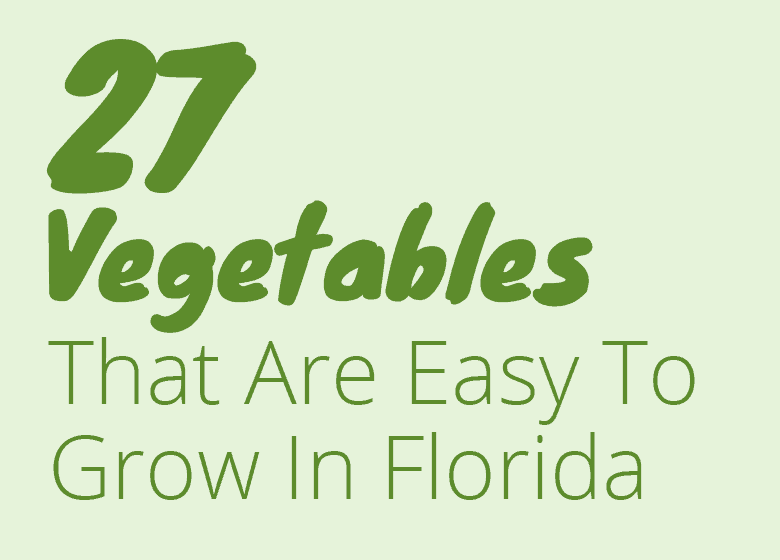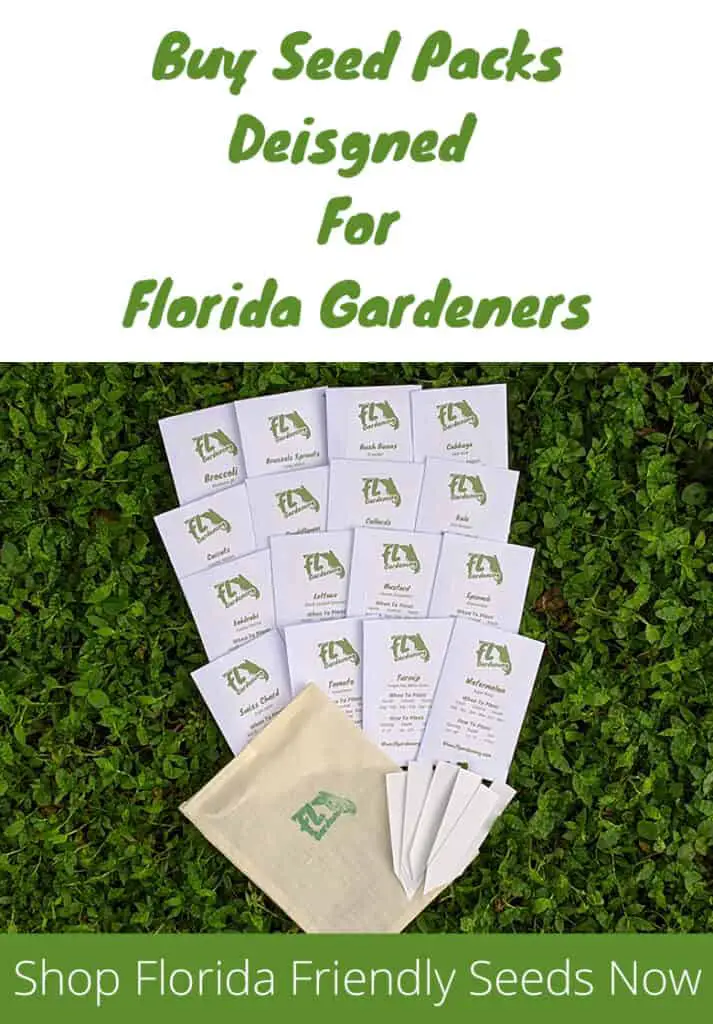Can you grow lettuce in Florida? Something I pondered while I was shoveling salad out of my Publix bought container.
Yes, you can grow lettuce in Florida. The planting times will change depending on where you are in the state.
- North Florida: Sept – Oct & Feb – Mar
- Central Florida: Sept – March
- South Florida: Sep – Jan
Florida friendly lettuce varieties: Astro Arugula, Bibb, Buttercrunch, Black Seeded SimpsonDeer Tongue, Bambi, Romaine Parris Island, Swiss Chard , Spinach, Red Sails.
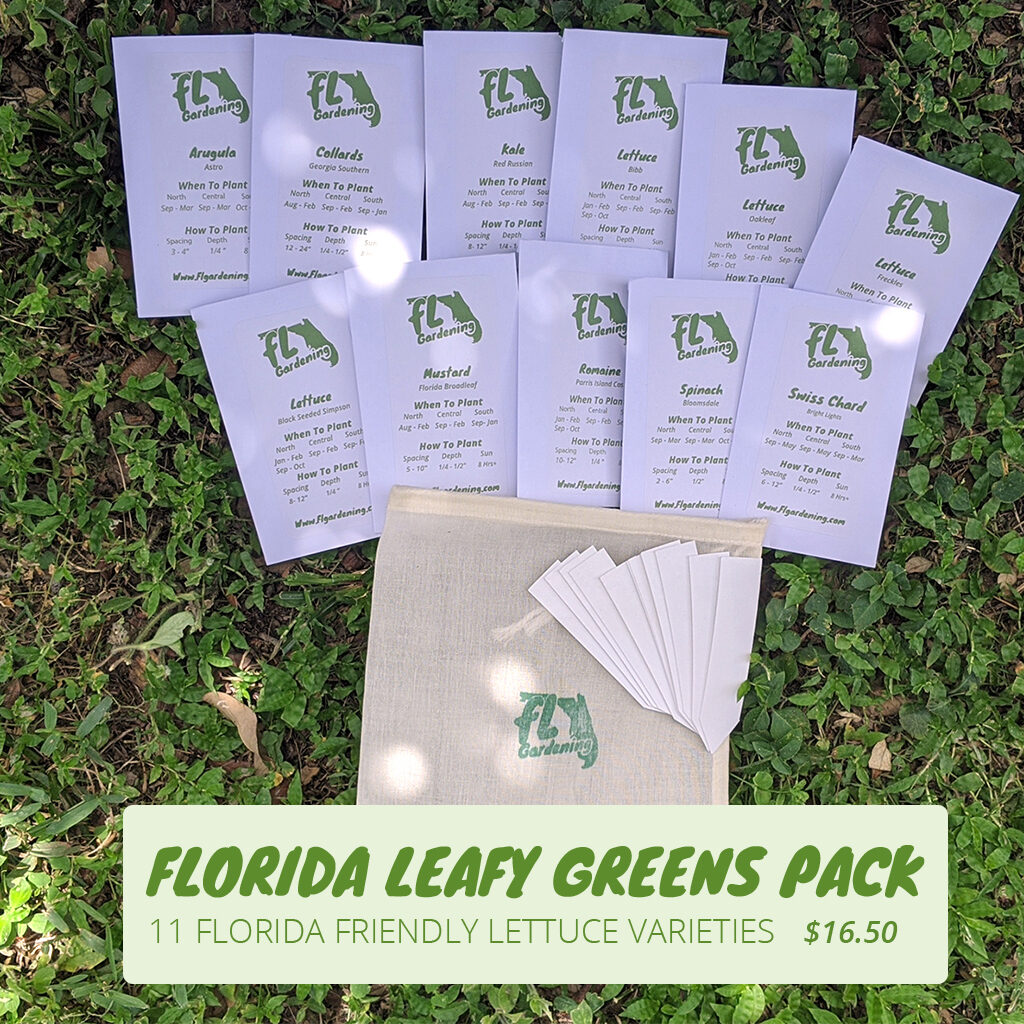
What Are The Different Types Of Lettuce That You Can Grow In Florida?
Lettuce is divided up and put into a category based on how the plant grows. The texture of leaves and the taste will change from variety to variety. There are four major different types of lettuce.
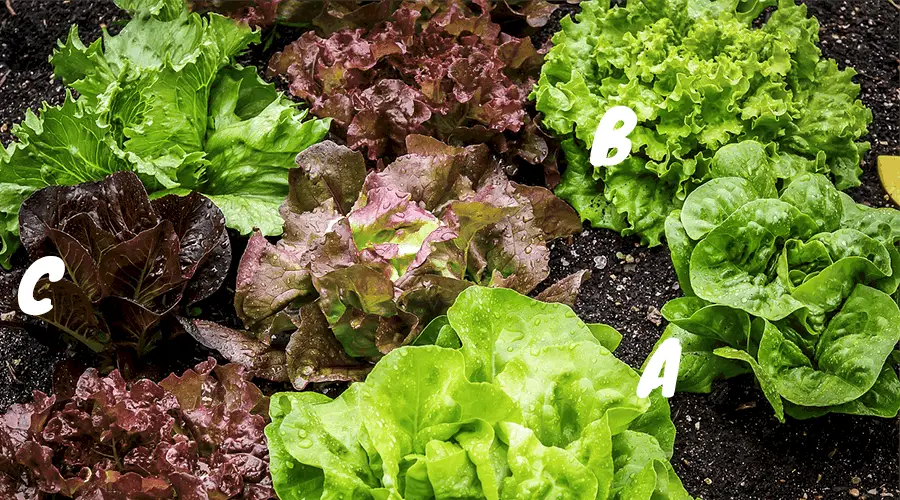
Leaf: These are defined by their loosely grown leaves and are probably considered the easiest to grow. Black Seeded Simpson lettuce is one of the more popular leaf options to grow but there are lots of other leaf types that grow well for us here in Florida like: Red Sails, Oak Leaf, Ruby Red, Green Salad Bowl.
Butter: Also called Bibb or Boston lettuce. These plants have tender, rounded and wrinkly leaves. Popular varieties of Butter lettuce that grow in Florida are Bibb, Big Boston and Buttercrunch.
Romaine: Grows just like you see it in the store, except you can get varieties that are pretty colorful, not just plain old green(Although you can grow those too). Your Standard, run-of-the-mill romaine varieties are Parris island and Dark Green. More colorful varieties are Freckles and Cimarron Red.
Crisphead: Just like iceberg lettuce.This is the most difficult variety of lettuce to grow in Florida. Iceberg lettuce requires a long growing season and is temperamental in the heat. You can try growing Iceberg, Ithaca and Great Lakes.
What kind of soil does Lettuce like?
Like most plants, Lettuce likes a balanced soil. Something that isn’t soggy or compact but something also that isn’t pure sand, like our most of our Florida soil.
Whenever I start a new veggie garden I usually get the same mix and I have pretty good luck with it.
- 40% Peat moss (Check price on Amazon)
- 40% Compost (You can get it on Amazon but I’ve found it way cheaper at local stores)
- 20% perlite (Check price on Amazon)
- Worm castings (Check
price on Amazon) - Mykos (Check price on Amazon)
Always try to buy local when you can. supporting small nursery’s is great and a good way to talk about plants.
How Much Sunlight Does Lettuce Need?
Lettuce plants can take full sun(8 hours) if planted at the correct time. However, I’ve noticed when growing lettuce that they also don’t mind an afternoon shade. If you planted a little late, like I do sometimes, and the weather starts to warm up you may notice that your plants look a little sad at the peak of the day if they are left in plain view of the afternoon sun. Planting on the east sides of gardens and buildings offer morning sun and afternoon shade usually.
How Long Until Lettuce Can Be Harvested
Lettuce grows quickly. You are harvesting most varieties within two months. You want to harvest your lettuce when the leaves are still young and tender. If you let the plant fully mature the leaves will begin to thicken and might start tasting bitter.
Leaf, Butter and Romaine type lettuces can all be harvested by clipping or ripping the outter leaves while leaving the center leaves to continue to grow. You can also just cut the whole plant down and eat it that way too. Crisphead type lettuces produce just one big head that you clip off when you think the center is firm.
What Is Bolting?
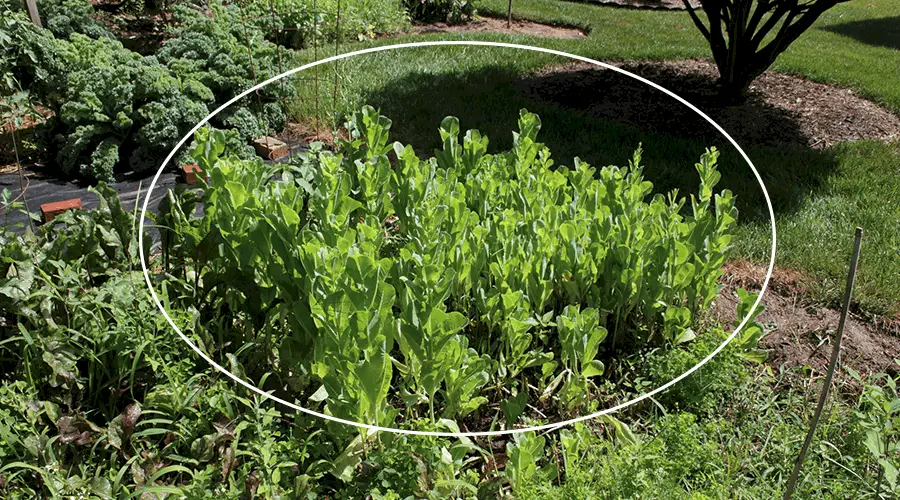
Lettuce taste best when grown in moderately warm to cooler weather. If lettuce is grown when it’s too hot it will Bolt.
The plant no longer focuses on making leafy greens for you, It will begin to reach for the sky, becoming lanky.
Bolting is basically the plant forcing itself to make seeds.
This may be a safety mechanism for the plant but it makes the leaves taste bitter.
Afternoon to all day shade may delay the bolting process but it is inevitable as the days warm up.
How Do You Plant Lettuce?
You can plant lettuce seeds directly into the garden if you want or you can start transplants indoors if you prefer.
I’ve had no problems planting my lettuce seeds directly in to the garden so i don’t see the point in adding the extra transplanting steps.
Lettuce seeds are really tiny and that makes it super easy for you to plant too many.
So before we get any further we need to come to the realization that we may need to kill some of these seeds before they get too big.
In general, Lettuce will need about 4-8 inches of space on each side of them to properly grow.
The easiest way that I’ve found to plant lettuce seeds is to make a tiny row in the soil with my finger. I then sprinkle seeds down that row and gently brush the soil back, trying to plant no deeper than 1/2″.
Keep an eye on them and choose the strongest looking plants and thin the rest to meet the space requirements.
How Do I Fertilize Lettuce?
The whole point of lettuce is to produce green, leafy growth. This means that we want a fertilizer that is nitrogen focused because plants use nitrogen to produce green growth.
Nitrogen is the first of the three numbers that you see on fertilizer bags. N-P-K(Nitrogen, phosphorus and potassium)
If you want to just add something to your soil that is nitrogen rich you can use worm castings or blood meal.
There are lots of granular fertilizers that you can use by simply sprinkling them on the ground and watering in. Go with something like a 10-5-5 or something similar.
With granular fertilizers be sure that none of the fertilizer touches the plant. This can cause burn damage.
Or
You could also use a water soluble fertilizer like fish emulsion. Don’t worry it won’t make your lettuce taste funny as long as you properly wash it before eating, as you should.
Apply according to directions on the labels. Generally this is every 2-3 weeks after the plant is a few inches tall, but you should still read the label, it will also give you the proper dosing.
What bugs attack lettuce in the Florida garden?
- Caterpillars
- Aphids
- Thrips
- Beetles
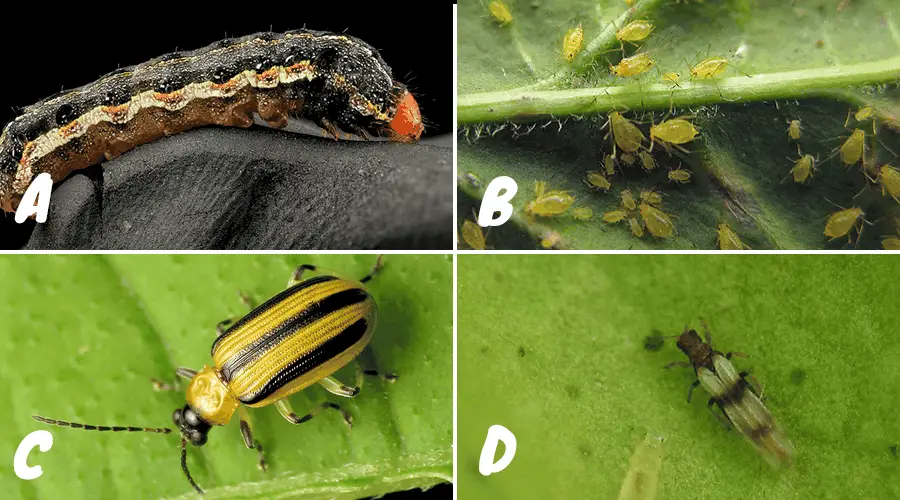
Cutworms, armyworms, and earworms. They aren’t worms, they are actually caterpillars!
They just bite chunks out of your plants, possibly pass viruses along and turn into moths.
Cutworms are devastating, will attack while your plant is small. They Chomp through it’s stem and mow it down like some sort of lumberjack. Armyworms, Cabbage Loopers and earworms damage your plants by eating the foliage.
Caterpillars aren’t the only things that likes lettuce.
Aphids will use their pointy mouths to suck all of the juices out of your plant. Aphids are a double whammy because once you kill them, the dead aphids are near impossible to clean off of your leafy greens.
Thrips can pass along viruses while eating your lettuce.
Beetles will damage your plants in the same way as thrips wills. There are many types of beetle that will attack your plant but the most common one being the cucumber beetle.
Common Lettuce Pest Control
The best pest control is growing a biodiverse gardern. The more plants that you have the more bugs that you attract. This may sound a little confusing because bugs are bad right?
Not really.
Yeah, there definitely are some bad bugs but more often than not bugs are beneficial to the garden. By planting lots of flowers and herbs in your garden you will draw in lots of predatory bugs that will take care of your
Pesticides should be your last resort. Even ones that are organic or “All-Natural” can still be harmful to the garden’s ecosystem.
A rotation of neem oil(or spinosad) and B.t. is effective. Neem, as well as spinosad, is effective at killing aphids and thrips.B.t. Is an effective poison that kills caterpillars. Neem, Spinosad
However, that doesn’t mean that these are not harmful to some of the good bugs like bees and wasps. To be safe, it’s best practice to only spray in the evening hours, when these types of bugs are least active.
Common lettuce diseases
- Downy mildew
- Leaf Spot
- Lettuce Mosaic Virus(LMV)
- Tomato Spotted Wilt Virus(TSWV)
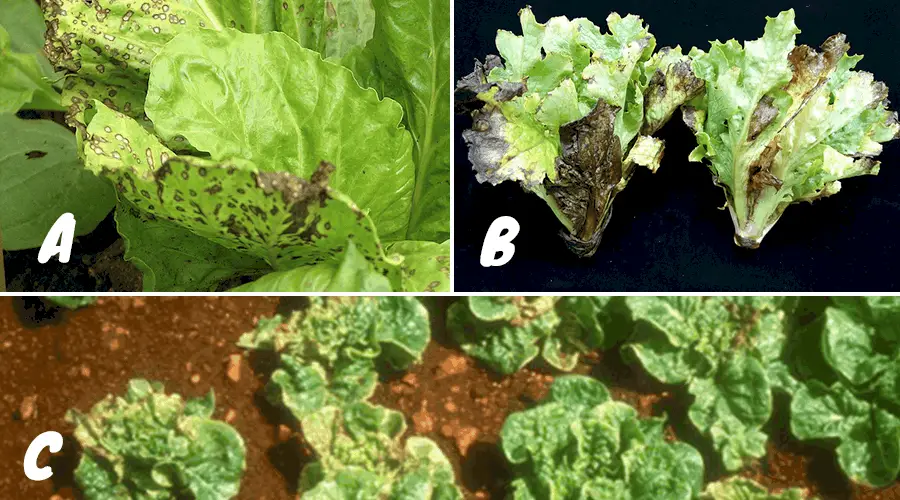
All of these disease will cause the leaves to become distorted in someway. Downy mildew will cause your leaves to to become yellow on the upper sides and the under sides will have a fluffy grey appearance to them. Leaf spot is just as it sounds, spots on your leaves. Usually darker brown to black. Lettuce Mosaic Virus is defined by blotchy yellowing of the leaves. Tomato Spotted Wilt Virus can appear as lots of browns circular spots on your lettuce’s leaves.
Common disease lettuce control: If found early, remove the infected leaves. Copper fungicides are a common organic garden disease control as well. It’s actually good practice to be proactive. I’ve found it helpful to get my plants on a spraying rotation of every 7-10 days.
Can I grow lettuce in the Florida summer?
The answer is no….but also yes.
You have to think outside the box a little bit but you can defieltly still enjoy leafy greens, They might just be different than what you’re use to.
The leaves that sweet potatoes produce are edible.
Sweet potatoes are a heat tolerant plant and provide a green alternative to many other lettuces.
Technically sweet potato leaves are not a lettuce but they can make a salad!
You can also grow Malabar spinach, which is a tropical plant that can withstand our heat.
This is a vining plant that produces spinach like leaves that needs to be trellised in some way.
Malabar will be killed by frosts and freezes. Those in the north should plan for that but those of us in central and southern florida can grow this thing an a perennial.
Both sweet potato and malabar spinach like full sun and plenty of water.
For more veggies that you can grow in the Florida summer check this out.
Growing Lettuce In Florida
Growing lettuce in Florida is easy as long as you plant at the right time and the correct variety.
- Planting times: North Florida: Sept – Oct & Feb – Mar Central Florida: Sept – March South Florida: Sep – Jan
- Florida friendly lettuce varieties: Buttercrunch, Deer Tongue, Bambi, Parris Island, Black Seeded Simpson, Red Sails.
- Give your lettuce a nice loose soil with plenty of nitrogen.
- Fertilize with a nitrogen focused fertilizer.
- Watch out for bugs like Caterpillars, aphids, thrips and beetles. Neem, B.t. and Spinosad are effective chemical controls.
- The most common lettuce diseases in Florida are downy mildew, leaf spot, Lettuce Mosaic Virus(LMV) and Tomato Spotted Wilt Virus(TSWV).
You Might Also Like:
